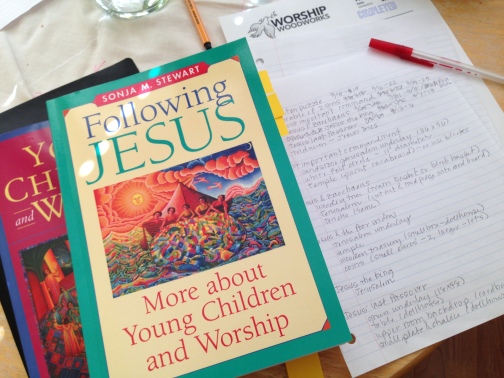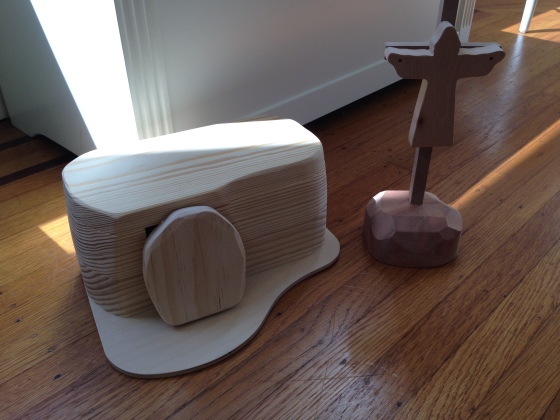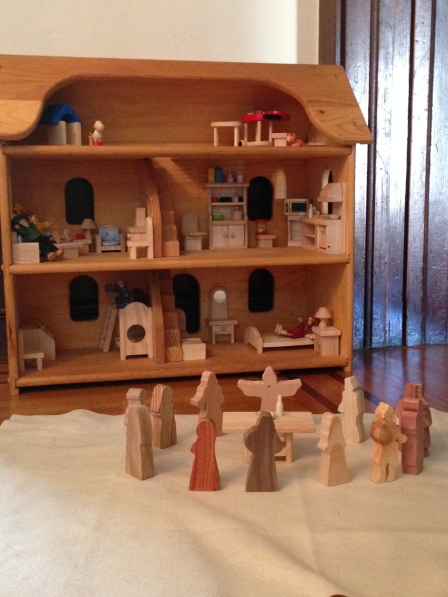The lack of mystery in our modern life means decay and impoverishment for us. A human life is of worth to the extent that it keeps its respect for mystery. By honoring mystery, we keep within us some of the child we used to be. Children keep their eyes wide open, wide awake, because they know that they are surrounded by mystery. They don’t yet have this world figured out; they haven’t yet learned to make their way by avoiding its mysteries, as we do. We do away with mystery, because we sense that it takes us to the limits of our existence – because we want to master everything and have it at our disposal. That is just what a mystery will not let us do. Anything mysterious is uncanny for us – we cannot do anything with it. We are not at home with it; it points toward another kind of “being at home.”
Dietrich Bonhoeffer, in a sermon given on Trinity Sunday, 1934
What do you think of when you hear the word “mystery”? I’ve noticed, in the Christian circles in which I move, two pretty instinctive reactions.
One is to recoil in discomfort and frustration from the unknown. Trotting out “mystery” can, after all, be an easy way to dignify sloppy theological thinking, or to paper over difficult questions a little too easily.
For other folks, the idea of mystery can have a romantic allure. If something’s mysterious, it must be deep! If you’re immediately attracted to the notion of mystery, maybe it’s easy to get impatient with straightforward explanations – theological or otherwise.
I find both of these reactions, frankly, kind of frustrating. The first is obviously impoverished and can kill imagination. The second can tend towards the shallow and trendy: there’s no automatic link between difficulty or mysteriousness and depth. Sometimes truth – even truth that will always evade our understanding – is best served by clear, rigorous language. (Case in point: the creeds.)
But I love the opening lines of Bonhoeffer’s 1934 Trinity Sunday sermon. “Anything mysterious is uncanny for us – we cannot do anything with it. We are not at home with it; it points toward another kind of ‘being at home.’” True awareness and wonder in the face of mystery are character traits that serve disciples well – we remember that we are no gods; we are not even our own; out of the rubble of the fall, our true selves and true home are still being revealed to us. They are not of our making.
I came across this post recently, in which W. David O. Taylor (one of my favorite bloggers, by the way – do read him) argues that the best thing about a good story is that it puts us in touch with mystery. Being of the “ooh, I like mystery!” bent myself, I was intrigued. Isn’t a story about explanation? About shedding light? About conflict and resolution – and about looking hard at the world around us, trying to craft some shape and narrative order out of events?
And in fact, isn’t that how most of us learn to see stories, early on? We teach our kids about ancient mythology, and explain that this was how people learned to make sense of the natural world: Zeus and his thunderbolts, Prometheus and his fire. Stories seem to be in the business of giving answers, of clarifying, of literally making sense. Right?
Well, yes and no. Stories do distill meaning out of the great mass of moments making up a human life. They do help clarify the experience of living in this marvelous, awful, amazing world. They do – at least, the best ones – tell the truth.
But ultimately, our experience in this world is never one that can be mastered. It can never be exhausted or plumbed to its depths. Just the basic fact of existence is deeply, richly mysterious. Why is there something rather than nothing? Who am I, and where am I going in all of this? And what do I do with all these fellow pilgrims?
“You are not your own; you were bought with a price.” The best and most true stories mirror this: they remind us of the mystery of our own existence, and the even more wild reality that we can’t help but give this existence a narrative shape. We believe – despite how little we control – that nevertheless our lives, and history itself, are stories. Not timelines, not collections of interminable moments, not a constant treadmill of brushing our teeth, trimming our nails, and taking out the trash.
No – stories. Because stories edit, shape, select, and make sense of the minutiae of human life. But also because, by their very existence, stories bear witness to what mystifies us if we ever stop to think. We all know, deep down, that we do not belong to ourselves; we have too little say over how we enter or leave the world. And no matter what we believe, we feel that we ought to belong elsewhere – that there is another kind of “being at home” we haven’t found yet, and long for. A story promises a kind of Providential mystery: the author, not the characters, is shepherding the narrative to its resolution; each character has a destiny that she has not chosen; this is the human lot.
And this lot is mysterious. Stories make that clear.









